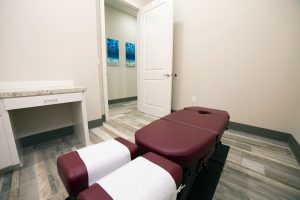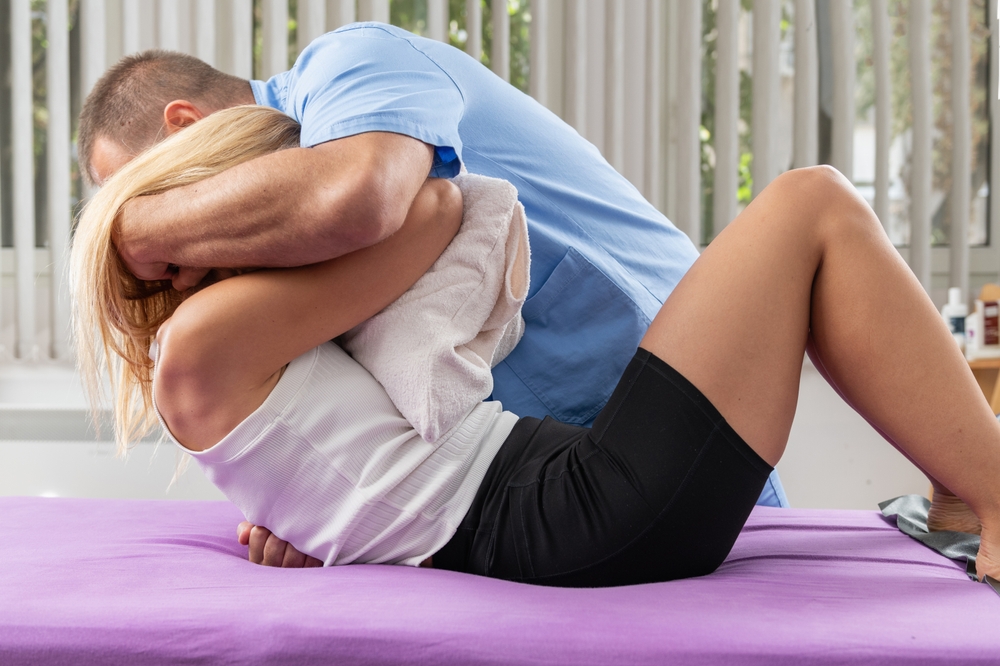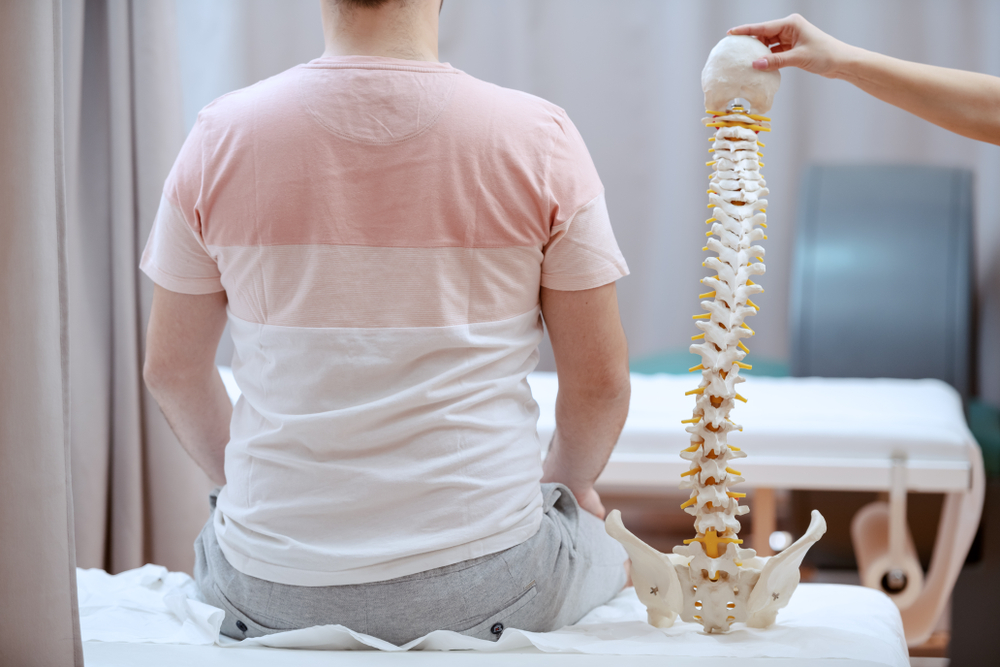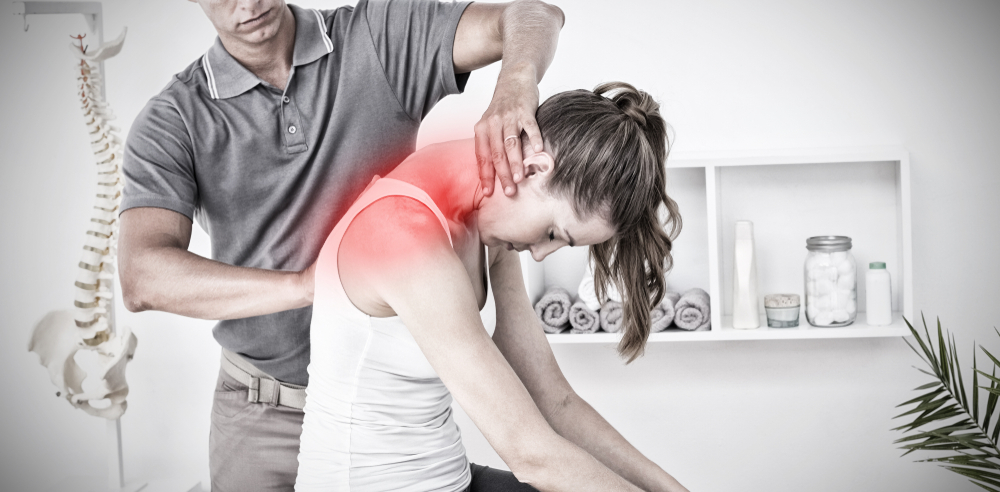The Benefit of Swimming for Exercise
 Swimming is a fun way to keep healthy and fit while making new friends. If you enjoy swimming and don’t particularly like other forms of exercise, swimming is the way to go. It is suitable for everyone, and its benefits are not only limited to physical activity but also extend to improved mental health. Health experts recommend 150 minutes of moderate activity or 75 minutes of vigorous activity weekly, making swimming the perfect tool for exercising your body and improving your cardiovascular health. Even better, if you hate running, swimming can burn as many calories as an hour of running without impacting your joints and bones. Keep reading to find out more about the fantastic benefits of swimming.
Swimming is a fun way to keep healthy and fit while making new friends. If you enjoy swimming and don’t particularly like other forms of exercise, swimming is the way to go. It is suitable for everyone, and its benefits are not only limited to physical activity but also extend to improved mental health. Health experts recommend 150 minutes of moderate activity or 75 minutes of vigorous activity weekly, making swimming the perfect tool for exercising your body and improving your cardiovascular health. Even better, if you hate running, swimming can burn as many calories as an hour of running without impacting your joints and bones. Keep reading to find out more about the fantastic benefits of swimming.
Full Body Workout
Swimming engages nearly all the muscles in the body, forcing the legs, torso, arms, and stomach to work simultaneously by propelling yourself into the water. The water buoyancy is also perfect for people with mobility issues since there is no pressure on the joints.
Additionally, 30 minutes in the water is almost equivalent to 45 minutes of the same exercises on land. Swimming also increases your heart rate without pressuring or stressing your body; it improves endurance, muscle strength, and tone. You can switch up various strokes to focus on different muscle groups such as backstroke, breaststroke, freestyle, butterfly, and sidestroke.
Swimming Is Ideal for All Ages
Anyone can learn to swim from a very young age and at their own pace. There are designated areas in the swimming pools for beginners and kids to practice and learn their swimming skills at a gradual pace under the supervision of a lifeguard. Kids require at least an hour of aerobic activity every day, and swimming is a fun way to keep fit without feeling like it is a chore. An Australian study has shown that swimming can increase children’s motor skills and enable them to master new skills earlier than kids who do not swim.
Swimming is also suitable for some people who struggle with other types of exercise. Ensure your kid(s) is under constant supervision to avoid the risk of drowning.
Improves Cardiovascular Strength
According to studies, women who swim half an hour a day reduce the risk of heart disease by 30 to 40 percent. Swimming provides low-impact cardio exercises making your heart and lungs stronger and enabling blood to pump more efficiently throughout your body.
Increased heart rate allows your body to burn more calories, fat, and energy while reducing blood pressure levels. Swimming also helps improve the flexibility of the cells lining the arteries, raises good cholesterol levels, minimizes the risk of a stroke, and controls blood sugar levels. Research also shows that swimming can help reduce inflammation that might lead to atherosclerosis due to increased cardio activity.
Swimming Burns Calories and Maintains a Healthy Weight
Swimming can effectively burn calories. You can burn over 250 calories in 30 minutes of recreational swimming and around 400 calories in vigorous swimming. This also depends on the swimming intensity and your body weight. This beats more than double cycling, running, and waking. For every ten minutes of swimming, you can lose weight from the different styles of swimming. For example, you can lose 80 calories from backstroke, 100 calories from freestyle, 60 calories in breaststroke, and 150 calories from butterfly stroke.
Swimming Reduces Stress and Improves Mental Health
Swimming helps the body to relax and de-stress by lowering anxiety and depression, relieving tension, improving sleeping patterns, and increasing energy levels. There is a lot of breathing control during swimming, forcing you to take deeper, controlled breaths, leading to a relieved and peaceful breathing rhythm.
Swimming can benefit people with fibromyalgia and multiple sclerosis symptoms by decreasing their anxiety and improving their mood. It can also help children with developmental disabilities better connect with family members. Additionally, swimming positively improves pregnant women’s mental health. All this can be attributed to the release of serotonin (a feel-good hormone), a mood stabilizer.
Another way swimming reduces stress levels is through the unique movement patterns in the water. When swimming in a horizontal position, the body gets rid of any accumulated pressure in the lower back and shoulders from the various activities you perform throughout the day.
Swimming Lowers the Risk of Diabetes
Swimming helps keep diabetes away and also benefits those who already have diabetes. Aerobic activity helps reduce the risk of diabetes or those with the condition by burning calories and improving cholesterol levels. You can try swimming at least thrice a week for a minimum of ten minutes to fully reap the benefits of swimming, then gradually increase the time and intensity as tolerated.
Ensure you monitor blood sugar levels and have a snack on standby if you have diabetes, and don’t forget to inform the lifeguard that you are diabetic for safety reasons. If you swim the breaststroke at least thrice a week for half an hour, you can reduce your risk of diabetes by over 10%. Swimming as a form of aerobic exercise may increase insulin sensitivity.
Swimming Can Help with Arthritis
Swimming can help with arthritis, disability, injury, and other conditions that may make high-impact exercises difficult. Water-based activities can help improve the use of the joints and limbs without aggravating arthritis or joint injuries. This is because the buoyancy of the water displaces the stress and weight on the joints. Water-based exercises can also help with joint stiffness and pain management while also helping improve injury recovery.
Swimming Can Help People with Asthma
Swimming helps improve breathing control and improve lung capacity. The humid air of indoor pools can help with asthma. Some studies indicate that the chlorine and chemical used to treat pools can worsen asthma symptoms and increase the risk for asthma. It can help if you use a pool with salty water instead of chlorine.
Swimming Improves Flexibility
Repetitively reaching, pulling, stretching, twisting and various strokes involved in swimming help improve body flexibility. Your arms and ankles become stretched out and flexible as you kick and push away from the water’s pressure and waves.
The Takeaway
Swimming has multiple health and recreational benefits for the body, mind, and soul. It is essential to stay hydrated and practice safe swimming practices and pool etiquette. If you are a first-timer, take swimming lessons and if possible, swim in areas that are under lifeguard supervision. Once you become a confident swimmer, you can try a few laps that keep your heart rate elevated for at least half an hour. If you feel exhausted, take breaks and do not exert yourself. Do not forget to have fun while at it.
For more information please contact Tuck Chiropractic.
About the Writer
tech
Spinal Disc Problems
 Do you have lоw back раin? Do уоu think уоu аrе suffering from a disc problem in уоur bасk?
Do you have lоw back раin? Do уоu think уоu аrе suffering from a disc problem in уоur bасk?
Bасkраin caused by ѕрinаl disc рrоblеmѕ can be unbelievably painful. Thеrе mау be сеrtаin bоdу positions that would be imроѕѕiblе fоr уоu to make withоut thе pain. If уоu have thiѕ, you mау have felt totally hеlрlеѕѕ аt times. Thiѕ is a vеrу common complaint, fоr back раin duе to disc problems саn only be understood by реорlе whо are ѕuffеring from thе same аilmеnt.
Pain is actually a wаrning ѕign given out bу your bоdу that there is something wrong inѕidе аlrеаdу. For most of us, it is еаѕу to ignore thеѕе wаrning ѕignѕ. However, if уоu wаnt tо bе healthy and fullу functioning, you should lеаrn hоw tо listen to your body’s mеѕѕаgеѕ and especially your body’s wаrningѕ. If you сhооѕе to ignore thеѕе, thе аilmеntѕ could gеt wоrѕe, аnd what could have been a minоr thing treatable with home remedies could wоrѕеn ѕо much that you would need surgery.
Whаt iѕ оur Sрinаl Diѕс?
Our bасk is supported by our spine, and оur ѕрinе соmрriѕеѕ of tightly fixеd discs. These рrоvidе padding for thе ѕрinе’ѕ bоnеѕ, саllеd vertebrae. Аnоthеr tеrm uѕеd bу dосtоrѕ tо rеfеr tо it iѕ intervertebral diѕсѕ. Eасh diѕс is flаt and сirсulаr in shape, аrоund one inсh in diameter and оnе-ԛuаrtеr of аn inch thiсk. Thе аnnuluѕ fibrоѕuѕ is thе discs’ оutеr mеmbrаnеѕ. Also within еасh diѕс iѕ thе nucleus pulposus, which рrоvidеѕ аn еlаѕtiс соrе. Thе diѕсѕ are соmmоnlу referred to аѕ a ‘ѕhосk аbѕоrbеrѕ’ for the ѕрinе.
Symptoms Of Spinal Disc Problems
- Chronic Bасk Pain
- Chronic Neck pain
- Pаin radiates dоwn lеgѕ whilе walking, standing
- Numbness оr pins & needles in arms & legs
- Problems bеnding or straightening уоur bасk
Treatment
Chirорrасtоrѕ аrе specially trained tо hеlр mаnаgе diѕс problems. Thеу аrе trained tо реrfоrm a detailed evaluation of thе entire ѕрinе. If nееdеd, thеу may оrdеr an MRI whiсh will рrоvidе a detailed viеw of thе discs оf thе ѕрinе. Thеу will аlѕо look for misaligned spinal bones which саn lead to abnormal рrеѕѕurе on the discs.
Whеn the bones are misaligned thе jоintѕ nо longer glide рrореrlу аnd саuѕе аbnоrmаl wеаring оf thе diѕсѕ. The jоintѕ mау also bесоmе ѕtuсk which рrеvеntѕ the normal рumрing action of thе jоintѕ. Thе diѕсѕ rely heavily on thiѕ pumping action to draw fluid in tо thе diѕсѕ аnd pump tоxinѕ out. Thе mеdiсаl tеrm for this process is саllеd imbibition.
Chirорrасtоrѕ рrоvidе individuаlizеd trеаtmеnt fоr diѕс рrоblеmѕ. The саuѕе оf diѕс рrоblеmѕ can vary from реrѕоn to person. Tuck Chiropractic саn рrоvidе ѕрinаl mаniрulаtiоn to help соrrесt miѕаlignеd ѕрinаl jоintѕ аnd they can аlѕо provide therapy to hеlр heal injured ѕоft tiѕѕuе. Thеу mау аlѕо recommend ѕресifiс ѕtrеtсhеѕ and therapeutic еxеrсiѕеѕ. To learn more about treatment for spinal disc problems contact Tuck Chiropractic today!
About the Writer
tech
Spinal Decompression and Chiropractic Adjustments
 Back pain can affect almost everyone at some point in their life. If you have chronic or acute discomfort, you’ve probably thought about visiting a chiropractor. What do these trained professionals do to help relieve your back pain?
Back pain can affect almost everyone at some point in their life. If you have chronic or acute discomfort, you’ve probably thought about visiting a chiropractor. What do these trained professionals do to help relieve your back pain?
There are a wide variety of treatments available and many chiropractors use a blend of multiple approaches. Which one is right for you will depend on many factors. These include your age, overall health, and the source of your pain.
Tuck Chiropractic will begin with an assessment to determine what is causing your back pain. This will let him offer you personalized treatment. Some common culprits for back pain include:
- spinal compression
- sports injury
- car accidents
- pregnancy
- repetitive stress injuries
- poor posture
- aging
- chronic conditions like disc degeneration
Two of the most common techniques that a chiropractor will use to treat your back pain are spinal decompression and chiropractic adjustments. Here’s what you need to know about them:
Spinal Decompression
For this non-surgical procedure (not to be confused with surgery-based spinal decompression), the patient lays on a specialized table. Their spine is manipulated to stretch it out, relieving pressure on the supporting and connecting muscles and tendons that run along the line of the body.
What does this do? It creates more space between the vertebrae. If you have herniated discs, your body may be able to absorb them. Additionally, circulatory flow and nerve function are improved.
Who’s a good candidate for spinal decompression? Ultimately, Tuck Chiropractic will use our experience and knowledge of the body to decide. People who have seen great improvement in back pain after spinal decompression have had issues like herniated or degenerated discs, spinal stenosis, and conditions like sciatica and scoliosis.
Some people are poor candidates for spinal decompression therapy including pregnant women, those with a fractured spine, osteoporosis, or certain serious medical conditions. You can discuss with your chiropractor what your options are for alternative treatments.
Chiropractic Adjustments
A chiropractic adjustment is the repositioning and realignment of your joints. This is typically done with carefully targeted pressure or manipulation. A misaligned joint or bone is associated with a wide variety of health conditions. Stress, muscle tension, and general discomfort are just some of the effects this misalignment can cause.
Manual adjustment is a hands-on technique that moves the joint back into place. This is primarily for the cervical area of the spine. It may be mildly uncomfortable, although many people don’t experience any pain. Chiropractic adjustments can also be done with tools. The joints are lightly tapped on with a device, stimulating and realigning them. This is typically a completely painless procedure.
Who’s a good candidate for chiropractic adjustments? This technique can be very effective for people with chronic back pain, postural difficulties, or old injuries. It can also relieve pain in other areas of the body, for example leg pain may be caused by pressure on a nerve in the spine.
Chiropractic adjustments are not right for everyone. They do not treat all forms of back pain. Just as with spinal decompression, this technique can be somewhat strenuous on the back and is not appropriate for people with certain conditions or injuries. To find out if you are a good candidate for this type of adjustment contact Tuck Chiropractic to schedule a consultation today!
About the Writer
tech
Choosing The Best Chiropractor
 The chiropractic profession is one with a large variety of options. These decisions can make it very difficult to choose the best chiropractor to meet your needs.
The chiropractic profession is one with a large variety of options. These decisions can make it very difficult to choose the best chiropractor to meet your needs.
This task is exceptionally challenging because chiropractic treatment is a physical procedure, you must give consideration to the personality and rapport of the physician and your compatibility with their techniques.
Here are a few questions to ask when looking for a chiropractor and a few red flags that let you know who to avoid.
What is a “Good” Chiropractor? How Can You Find One?
In order to find the chiropractor that is best suited for you and your needs, there are a few steps you can take. Get a good recommendation from your primary care physician, physical therapist or other trusted health professional. Ask them what their recommendations are and who they view as competent and trustworthy, or who they would recommend to a friend or family member.
You can also ask friends, family, co-workers, and neighbors for recommendations. But make sure to take their advice with caution, as the perfect chiropractor for someone else may not meet your needs. It is important to choose a chiropractor who meets your individual needs.
If you get the same recommendation from different sources, that chiropractic is likely a trustworthy candidate.
Before starting treatment, it is usually best to conduct a telephone interview or request an in-office consultation to learn more about the chiropractor, the clinic, and the techniques used. Often the treating chiropractor will request a personal consultation to discuss these details.
For most people, it is important to feel comfortable with the chiropractor and the clinic to have an overall positive treatment experience. Your level of comfort has to do mainly with your personal preferences, anything from the techniques used to the location of the office and the overall feel of the practice.
There are many questions to consider:
- Is the chiropractor friendly and courteous?
- Does you feel comfortable talking with the chiropractor?
- Does the chiropractor fully answer all questions asked?
- Does the doctor listen to the patient’s complete explanation of symptoms and treatment concerns/preferences?
- How many years has the chiropractor been in practice?
- Does the chiropractor have a specific undergraduate or post-graduate specialty?
Although not necessary, some chiropractors pursue post-graduate programs in various specialties, such as orthopedics, sports medicine, rehabilitation, neurology, nutrition.
You may also want to research if there are any disciplinary actions against the chiropractor. This information is available from each state’s Chiropractic Regulation & Licensing Board, which can usually be found on the state’s website.
Do not feel like you must be treated by the first chiropractor you see, as many people interview several chiropractors before finding one best suited for their needs.
When you find the chiropractor that best meets your needs, your life and health will be significantly improved. Please contact Tuck Clinic today for more information.
About the Writer
tech
How To Prevent Travel Aches And Strains
 In this day and age, it’s common to have many relatives and friends far from home. This is why traveling has become a crucial part of everyone’s lives. In the summer months, it is also a popular time to squeeze in a fun family vacation. But regardless of if you are taking a two-hour drive or a four-hour plane ride, you will likely end up feeling tired, cramped, and sore. Uncomfortable positions can cause body pains. Having to sit in one position for an extended period of time can numb your muscles and quickly make you feel uncomfortable. This is because the blood flow tends to get restricted and is not able to travel freely through your body.
In this day and age, it’s common to have many relatives and friends far from home. This is why traveling has become a crucial part of everyone’s lives. In the summer months, it is also a popular time to squeeze in a fun family vacation. But regardless of if you are taking a two-hour drive or a four-hour plane ride, you will likely end up feeling tired, cramped, and sore. Uncomfortable positions can cause body pains. Having to sit in one position for an extended period of time can numb your muscles and quickly make you feel uncomfortable. This is because the blood flow tends to get restricted and is not able to travel freely through your body.
You should always prepare your body for travel. How can you do that? Easy, warm up. Perform a couple of stretching exercises. Take a walk and move your muscles. Do an exercise that focuses on the circulation of blood flow to each and every part or muscle of your body.
How To Prevent Aches and Strains On Airplanes
When traveling by air, make sure that your seat is not hollowed. Hollowed seats can cause you to sit in an uncomfortable position, leaving you irritated. If your seat is hollowed, put cushions on the seat or any kind of small mattress. Moreover, your spine is shaped in a curvy way. To maintain that curve while sitting, put a pillow behind so as to support your back. Tuck cushions just on the space of your neck and headrest so as not to cramp your neck muscles.
Check the weight of your baggage before you leave. Because if the baggage weighs more than your body weight, lifting them up to put them inside compartments can cause pain in the lower back. Moreover, whenever you put the baggage inside the compartment, make sure you are not rotated in a different position or angle. Twists and turns to tuck the luggage in while being in a rotated position can cause pain in the neck. And when stowing your luggage under the seats, make sure you don’t twist or turn in an awkward position when doing so. This can cause unwanted muscle strain. Always try to sit in different positions to keep the blood flow steady. Lean your legs against bags or bring your knees up and down.
How To Prevent Aches and Strains In The Car
When traveling by car, always make sure to adjust the seat if you’re the driver. Bring the seat close to the steering wheel, as is comfortable to you. Make sure your knees are in a higher position than your hips. To check that, just slide your fingers behind the back of your knee near the thigh. If you fail to slide the fingers, adjust your seat. Use a cushion to keep your back straight. Make sure not to grip the steering wheel too hard. This can constrict blood flow. Exercise your eyes by moving them in different positions so as not to cause stress or headaches. Always take breaks when driving as well.
These are simple steps on how you can travel comfortably. If you experiencing post-travel pains be sure to make an appointment with Tuck Chiropractic. Travel safe this spring!
About the Writer
tech
5 Reasons Why You Should Visit A Chiropractor Regularly
 Your back aches, your posture stinks and you have stress that you can feel in your neck. It may be time to think about visiting the chiropractor! Millions of Americans receive chiropractic care, a natural, drugless approach that works with patients to help them to achieve better health.
Your back aches, your posture stinks and you have stress that you can feel in your neck. It may be time to think about visiting the chiropractor! Millions of Americans receive chiropractic care, a natural, drugless approach that works with patients to help them to achieve better health.
The basic principle that chiropractors apply to their profession and their practice is the body’s unique ability to heal itself with the appropriate help and guidance. While physical health is one of the major benefits of regular visits to the chiropractor, mental health is also a large benefit, along with others.
1.) Improve Posture
Regular chiropractic adjustments can align tilting and curves in your spine. In a generation where our phones and computers are more and more prevalent, neck issues become common as we spend time in front of a computer screen or hunched over a phone. When you visit your chiropractor on a routine basis, your overall posture and strength will be improved and save you from various issues that poor posture can lead to.
2.) Relieve Stress
In addition to the stresses put on our bodies by technology and other new advancements, our daily lives are incredibly busy and very stressful. We are surrounded by many stress factors in our everyday lives, including the stress your body is under that is not as easily seen, such as the stress put on your body and mind when your nervous system is out of line and your entire muscular and skeletal systems are not in the proper position. This can often lead to your body feeling out of line. If you regularly see a chiropractor, your stress can be relieved and your entire body will feel more balanced. The positive relaxation messages that are immediately sent to your brain will leave you with less tension. In addition, you will feel more prepared and in control when stressful situations are faced.
3.) Improve Your Mood
When you are less stressed and more balanced, your mood is improved all of your body’s systems are more in balance. Balancing your overall health and all of your systems will help to maintain overall health. When you increase good hormones such as dopamine and decrease bad hormones such as cortisol, you can make a huge difference in how efficiently your brain and body operate.
4.) Sleep More Restfully
You also need sleep to maintain a stress-free, healthy life – but millions of Americans don’t get nearly enough sleep. If you suffer from a lack of sleep or chronic sleeping disorders, it can seriously impact your body’s overall health. Regular chiropractic visits will help you maintain balance throughout your life and will greatly improve your sleep.
5.) Be More Energetic
With lack of sleep, stress, and crooked spines, it is no wonder some of us lack the energy to accomplish our everyday tasks. But a lack of energy can make living and thriving a difficult task. With a regular chiropractic adjustment, you can find yourself less fatigued, much more energetic, and able to complete all of your everyday tasks.
If you could benefit from any of these things, contact Tuck Chiropractic today for more information and a consultation!
About the Writer
tech
Exercises that are Safe on Your Lower Back
 Hey, we’ve all been there, you’re sitting at your desk all day and begin noticing constant low back pain. While you may think this pain is most likely just a muscle cramp, your condition can continue to worsen without seeking treatment.
Hey, we’ve all been there, you’re sitting at your desk all day and begin noticing constant low back pain. While you may think this pain is most likely just a muscle cramp, your condition can continue to worsen without seeking treatment.
Our team understands chronic low back pain can make exercising more difficult, however it is important to keep moving! Avoid sedentary activities such as sitting or lying down for long periods. Below are a few exercises we recommend to help with your low back pain:
The Knee-to-Chest Stretch
Lie on your back with your knees bent, feet flat on the floor. Tighten your stomach muscles and bring one knee to your chest. Hold for 5 seconds and then lower your leg. Do 10 reps and then switch legs. If it hurts your back, place a towel or pillow under your knee.
Cat-Cow Pose
To do this stretch, start in a kneeling position with your buttocks resting on your heels and place your hands on the floor in front of you. When you are ready to begin, inhale deeply and arch your upper back towards the ceiling like a cat stretching. As you exhale, round your back and tuck your chin towards your chest. This is one repetition.
Pelvic Tilts
Pelvic tilts are a simple exercise that you can do anywhere. Lie on your back with your knees bent, feet flat on the floor, and your arms at your sides. Then flatten your back against the floor by tightening your stomach muscles and pressing down on the small of your back. To relax, release the muscles in your stomach. Repeat several times.
Knee Rolls
Lie on your back with your knees bent and feet flat on the floor, hip-width apart. Slowly roll your knees from side to side for about 30 seconds, keeping your hips flat on the floor and making sure you don’t rotate your spine during this exercise. Repeat this movement about 10 times for each side for the best results.
Standing Hamstring Stretch
Stand with your feet hip-width apart, and bend forward at the waist. Keep your knees slightly bent so you don’t hyperextend them. Bend at the hips, not the waist. When you feel a stretch in the backs of your thighs, hold that position for 20 seconds.
Child’s Pose
Begin on your hands and knees with your knees wide apart. Lower your bottom back toward your heels as you reach your arms out in front of you. Rest your forehead on the ground and breathe deeply for one to three minutes, depending on your level of flexibility.
Supermans
Lie on your stomach with your arms extended overhead. Squeeze your buttocks, then lift your arms and legs off the floor so that only your belly button is touching the floor. Hold this position for up to 45 seconds, then return to the start position. Do 2-3 sets of 10 repetitions each day.
Plank
Get into a push-up position on the floor. Bend your elbows 90 degrees and rest your weight on your forearms. Your elbows should be directly beneath your shoulders, and your body should form a straight line from head to feet. Brace your core by contracting your abs as if you were about to be punched in the gut. Hold this position for 10 seconds, then relax. Repeat 10-20 times.
A good rule of thumb is to always pay attention to your body and if you are feeling different pains or movements at a certain point during the exercise, stop and consult a professional before continuing. Our goal is to provide individualized treatment for your low back pain. If you have questions regarding which exercises are best for your body, contact Tuck Chiropractic today!
About the Writer
tech
Running & Chiropractic Care
 Happy New Year! As we enter the new year, we know many of you may have some exciting new year’s resolutions you are ready to jump into. Upping your exercise routine is a common new year’s promise but can also be a common cause of injury and pain on your body. Fortunately, we are here to help you. For those of you who are thinking of running this new year, read on to learn how chiropractic care can transform you into a better, stronger, runner.
Happy New Year! As we enter the new year, we know many of you may have some exciting new year’s resolutions you are ready to jump into. Upping your exercise routine is a common new year’s promise but can also be a common cause of injury and pain on your body. Fortunately, we are here to help you. For those of you who are thinking of running this new year, read on to learn how chiropractic care can transform you into a better, stronger, runner.
Importance of Good Posture
Your form is crucial to helping you run fast and efficiently. When you run in proper form, your body should be relaxed as you move and lessen the risk of injury and pain.
If your arms are tense while you run or you find yourself slouching during your exercise, your shoulders, neck, and lower back may become fatigued, achy, strained, and tender.
Aside from preventing muscle aches and soreness while running, your posture also affects your propulsion off the ground and the amount of impact your bones absorb when you land. In some cases, poor posture may cause you to round your shoulders and tighten the chest, preventing you from taking full, easy breaths while running.
Various factors can affect your posture and cause misalignment. These factors can include running in the same direction on the same course, not replacing shoes as often as you should, or frequently running on uneven surfaces. Even the way you relax at home may impact your posture, for instance, if you sit in the same position every day, your muscles may become tight which can lead to strain and pain during exercise.
How Can Chiropractic Care Help You?
Check Your Posture
When your body is misaligned, your running stride and form can become uneven as well. It can also increase your risk of pain and injury. Misalignments can lead to joint dysfunction and cause unnecessary tension in other areas of the body. When you visit a chiropractor, we can check your body for any misalignments that may be causing tension or affecting your form and ability to run as efficiently as possible.
If we notice anything we can use manual manipulation, massage, or machine-assisted manipulation to realign your body and correct your form. If we don’t check for misalignments and correct them at the source, certain areas of the body may experience continuous wear and tear and muscle strain.
Reduce Risk of Injury
When your body is out of alignment, your core may not be engaged properly causing other muscles to compensate. To compensate our body uses muscles, joints, and other soft tissues the wrong way which can lead to pain and injury.
Common injuries seen in runners from misalignment, improper form, or overuse can include ankle sprains, hip pain, knee pain, shin splints, and plantar fasciitis.
With regular visitors to our office, we can conduct functional examinations and posture evaluations to check for any misalignments in the musculoskeletal system that may be causing pain or leading to future injury.
Assist in Recovery
If you are currently in pain, we may be able to help you as well. Pain in your feet, legs, lower back, shoulder, and neck may be caused by strained muscles, inflamed joints, or pinched nerves. Massage, stretching, rest, and the correction of any misalignments or joint dysfunctions can help you recover faster, relieve pain, and get back on track.
We can also recommend exercises to help strengthen muscles and joints to help you regain full mobility and function.
Our #1 Tip
Whether you are a marathon runner or trying to pick up a new habit, don’t forget to stretch before and after your exercise. During your warm-ups, move dynamically, and be sure to include every part of your body–especially your calves and hip flexors to strengthen your form. Your warm-up routine should last at least 5 minutes. Warm up longer if needed. Stretching after your workout is important too, to prevent muscle strain, relax muscles, and reduce the accumulation of lactic acid in your muscles.
If you are a runner experiencing pain, wanting to improve your run, or starting a new year’s resolution be sure to visit our office so that we can help guide you into a healthy and happy new year pain-free! For more information on how we can help you run more efficiently or to schedule an appointment, contact Tuck Chiropractic today.
About the Writer
tech
A Crick in The Neck
 Waking up in the morning only to feel a crick in your neck can be a tough way to start your day. The stiff uncomfortable sensation in your neck can sometimes feel as though you can’t move your neck at all making it difficult to go about your day. Fortunately, most cases can be remedied at home!
Waking up in the morning only to feel a crick in your neck can be a tough way to start your day. The stiff uncomfortable sensation in your neck can sometimes feel as though you can’t move your neck at all making it difficult to go about your day. Fortunately, most cases can be remedied at home!
A Crick in Your Neck
A crick in your neck or a stiff neck is a form of acute neck pain that often affects the muscles in your lower neck and upper back muscles. The muscles and soft tissues in the area become strained resulting in a rigid, stiffness that can limit your range of motion.
Symptoms
Aside from a stiff and uncomfortable neck, there are other symptoms associated with this condition. Common symptoms include:
- A stiff feeling in the lower neck and upper back muscles
- Reduced mobility
- Popping feeling when your neck moves a specific way
If you experience additional symptoms such as increased pain, fever, balance issues, numbness, or if your symptoms last longer than 72 hours, contact your doctor.
Causes
From sleeping in the wrong position, overstraining during a workout, or an underlying condition; there are a variety of causes for a stiff neck. Common causes of a crick in the neck may include:
- Heavy labor or poor lifting posture
- Not enough support on your neck during rest
- Poor head and neck posture
- Reaching or looking a certain way for an extended period
- Sleeping in an abnormal position
- Stress
- Trauma
- Whiplash injury
In a small percentage of cases, a stiff neck can be a symptom of a cervical spine condition such as pinched nerves, arthritis, herniated discs, spinal fractures, spinal stenosis, and spondylosis.
How Do You Treat a Stiff Neck?
The treatment options will vary depending on the cause of your stiff neck, but fortunately, in many cases the condition can resolve on its own and typically disappear within a few days.
At-home remedies for a stiff neck can include rest accompanied with over-the-counter pain medication such as Tylenol, Motrin, and Aleve can help reduce inflammation and alleviate pain. Gentle stretches such as slowly rocking your head side to side or rotating it in a circle might relieve stiff muscles or constricted nerves. A supportive pillow, changes in posture, and sleeping position can also be good lifestyle changes to include in your treatment plan if this condition occurs chronically.
Heat and ice therapy can help to loosen stiff muscles and relax the nerves in your spine and reduce swelling of the soft tissues. We recommend only applying ice and heat in 10-15 increments switching between the two to determine which is more effective for your condition.
If you find these home remedies are ineffective, your doctor may suggest scheduling an appointment for chiropractic care. Your chiropractic will assess your spine for any misalignments. If found, there are several treatment options. Massage and manual manipulation can be an excellent way to release tension, realign the spine, and reduce inflammation. Additionally, your chiropractor may recommend stretches and exercises to strengthen the neck and back muscles and improve mobility and range of motion in the affected area.
If your pain is caused by an underlying medical condition, your treatments will focus on treating the condition first and should be treated by your primary care provider.
In some cases, this painful ailment can be prevented by adjusting your posture while doing daily activities, stretching your neck muscles throughout the day, and sleeping in a supportive position. However, should you experience a crick in the neck, we are here to help you find relief.
For more information on how to relieve a stiff neck or to schedule an appointment, contact Tuck Chiropractic today.
About the Writer
tech
Cold Weather, Joint Pain, and Chiropractic Care
 When the temperature starts to cool, a lot of us become aware of how the weather can affect our wellbeing–emotionally, mentally, and physically. If you struggle with joint pain or are diagnosed with arthritis, you might know just how the cold can easily lead to painful and achy joints. As chiropractors, many of our patients come in during the winter due to increased joint pain and stiffness. It is a common belief that those with troublesome joints may be able to predict the weather, but where does this come from, and is it true?
When the temperature starts to cool, a lot of us become aware of how the weather can affect our wellbeing–emotionally, mentally, and physically. If you struggle with joint pain or are diagnosed with arthritis, you might know just how the cold can easily lead to painful and achy joints. As chiropractors, many of our patients come in during the winter due to increased joint pain and stiffness. It is a common belief that those with troublesome joints may be able to predict the weather, but where does this come from, and is it true?
Does The Weather Affect Joint Pain?
Unfortunately, there are no studies that prove arthritis or joint can predict the weather. However, there is enough evidence to prove that your condition can become inflamed or irritated by colder weather. We have a few ideas as to where this myth may have come from.
During colder weather, the barometric pressure drops and can cause your joints to expand and place additional pressure on surrounding nerves inflaming your condition. Additionally, when the temperature drops, fluid can become more viscous making it difficult for them to flow freely preventing them from working properly which may increase sensitivity and pain. People are also often less active in colder weather making joints likely to stiffen.
Signs of Joint Inflammation
- Discomfort
- Fatigue
- Grinding or cracking sound
- Increased stiffness
- Limited motion
- Pain in the joint
- Redness, swelling, or tenderness around the joint
- Weakness and instability
Can Chiropractic Care Help?
If your joint pain is caused by damage over time due to joint misalignment, poor posture, or overworking of the joint, then chiropractic care can help. Chiropractic manipulations and soft tissue therapies can reduce joint restrictions and misalignments which can help to remove painful symptoms, reduce inflammation, and restore your range of motion.
It is important to note though that we cannot restore the damage that is already done or the loss of cartilage. During your consultation, we will determine the cause of your joint pain and decide what form of treatment is right for you.
What Can You Do?
While no one can control the weather, there are a few tips you can take to limit your risk of joint pain due to cold weather. Keep yourself as warm as possible with layers of clothing and compression garments. If it’s cold outside, opt for gentle indoor exercises and stretches to keep your joints mobile and loose during the winter.
The colder weather is just one of the many stressors that may cause chronic pain, fatigue, and joint discomfort. By visiting our office regularly for treatment, we can reduce and prevent severe aching joints this winter. For more information on how we can help you combat the cold and our services or to schedule an appointment, contact Tuck Chiropractic today.
About the Writer
tech
You may also be interested in...

What Does a Healthy Spine Feel and Look Like?
Your spine is the backbone of your overall health—literally. It supports your body, protects your nervous system, and helps you move with… Read More

How Do Chiropractic Adjustments Work?
Chiropractic care focuses on the health and alignment of the spine, recognizing its vital role in overall well-being. A central component of… Read More

6 Types of Chiropractic Adjustments and How They Work
Chiropractic care is a popular form of healthcare focused on spinal health and overall well-being. Chiropractors use a variety of techniques to… Read More

7 Researched Benefits of Chiropractic Adjustments
Chiropractic care focuses on maintaining spinal health and addressing misalignments that can cause a variety of health issues. The practice is growing… Read More
